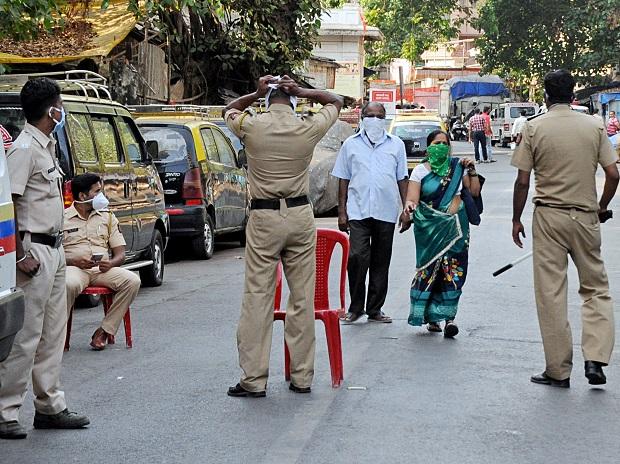Almost two weeks ago, we at TFI had done a story about Bhilwara in Rajasthan when the number of cases in the district had suddenly spiked to 45, triggering fears that it could be the first case of community spread of the novel Wuhan virus in the country.
In fact, the district had recorded 21 confirmed cases, and two deaths in a short span of 24 hours, and the Bangar Memorial Hospital had emerged as the epicentre of the Coronavirus outbreak in Bhilwara.
The Gehlot government had remained apathetic towards Bhilwara, and the Rajasthan Health Minister Raghu Sharma and Bhilwara MLA Vitthal Shankar Avasthi did not hold a meeting for quite some time even though the outbreak had engulfed the district.
The Gehlot government has been listless on a larger level too, as it remained listless even though the first case of an Italian national testing positive was recorded from the Pink City, Jaipur. Gehlot government however delayed sealing the borders of the state, despite it being a tourist-friendly state. And this is where the local administration of Bhilwara stepped in to save the day.
At the forefront of the fight against Coronavirus, District Collector, Rajendra Bhatt announced a lockdown in Bhilwara on March 21. All l industries, factories, brick kilns and other establishments in which more than 10 workers were employed were closed down.
Yet the number of cases had surged in the upcoming days, what however followed was an excellent containment strategy under Bhatt’s leadership, which has made Bhilwara the first district in the country to break the chain of the spread of Coronavirus within a span of less than two weeks.
Bhilwara boasts of a robust textiles industry which had to be closed down in order to take people off the streets, and in order to avoid panic, the district industrial in charge was directed to talk to all establishments in Bhilwara, urging them not to entrench workers amidst the lockdown.
Vipul Jani, the industry incharge of Bhilwara said, “I spoke to industry associations and contacted individual enterprises on phone asking them to retain their staff. We issued special passes to factory owners so that they could process wage payments to workers.”
But when the cases spiked, the administration too imposed more effective and far-reaching measures. On April 3, an eleven day “all-down curfew” was imposed in the district.
This is probably one of the strongest measures taken by any district administration, and what it meant was that even the essential services would be curbed, and these services are now being delivered by the local administration.
Apart from the aggressive lockdown strategy, the Bhilwara administration has been screening at a war-footing too as teams of health workers have screened a population of 24 lakh in the entire district, apart from conducting contact tracing of the COVID-19 cases.
Currently, the only infected patient, a 47-year old school teacher who says that he has no travel or contact history, is undergoing treatment in the district after he was tested positive by a team of health workers on Thursday.
In order to ensure that the chain of Coronavirus spread is broken ruthlessly, those with symptoms were sent to home quarantine and the confirmed cases to isolation centres.
The isolation centres too had to be arranged in a hurry and the Bhilwara administration acquired hotels, resorts, hostels and dharamshalas (inns) to arrange 1,500 quarantine beds, apart from 14,400 normal beds in order to meet any eventualities.
Amidst the tremendous efforts by the Bhilwara administration, Congress party and the Gandhis have been busy claiming credit for it. In what comes as a major embarrassment for the Gandhis, a Bhilwara village sarpanch has slammed the Sonia Gandhi for giving credit of Bhilwara”s model of combating Coronavirus to Rahul Gandhi.
Kismat Gurjar took to Twitter on Saturday and said that the people of the district and not Rahul or the state government should get the credit for the success of Bhilwara model. She said, “I was disappointed. The Bhilwara model was made possible by the hard work of farmers, women, villagers of Bhilwara. In their fight against corona, the locals diligently followed minute instructions, thereby setting an example of self-discipline.”
She further added, “Prime Minister Narendra Modi’s appeal has immensely influenced the people here. The local people have not only followed the lockdown guidelines but also adhered to social distancing and kept their surroundings hygienic.”
भीलवाड़ा वासियों की मेहनत का श्रेय सोनिया गांधी जी द्वारा राहुल गांधी जी को दिया जाना दुःखद हैं। pic.twitter.com/B9tSu52h2e
— Sarpanch Kismat Gurjar (मोदी का परिवार) (@SarpanchOnline) April 11, 2020
Today, Bhilwara has literally come out of the jaws of Stage-III community transmission of Coronavirus, but Rajasthan as a whole remains one of the worst-affected states with a total of 579 cases, it is the fourth worst-affected state in India insofar the Coronavirus outbreak is concerned.
Kota and Jaipur are fast emerging as the new hotspots of COVID-19 in the state as Gehlot government’s gross negligence is to blame for this. But Bhilwara has made a mark for itself as the local administration has shown the way ahead not only for Rajasthan but for the entire country when it comes to combating the Chinese virus, winning the praise of even the Union Cabinet Secretary Rajiv Gauba.
